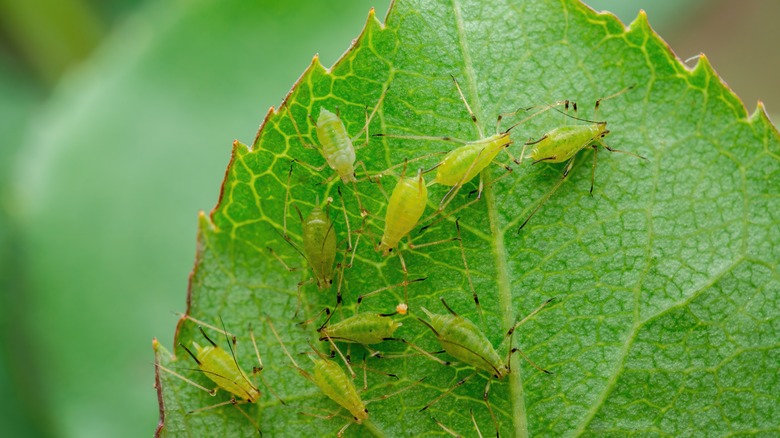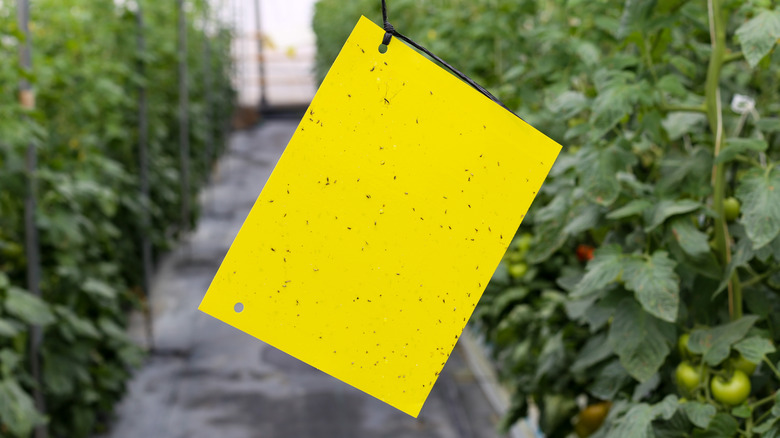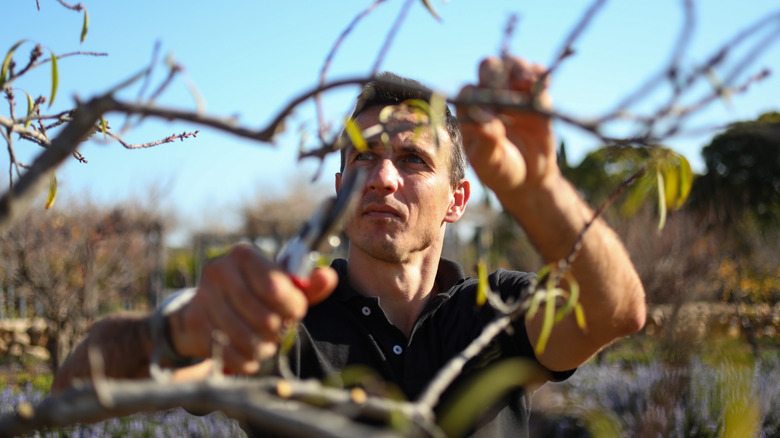Easily Get Rid Of Pesky Aphids With This Brilliant Tip
Dealing with pests is an inevitable part of gardening. One notorious pest that affects several plants is the aphid. Aphids are minuscule, soft-bodied insects that congregate on the undersides of leaves. They feed on the leaves and soft tissue of the plant using a piercing and sucking mechanism, leaving leaves brown, devoid of life, and stunting and killing plants. These little devils can invade your yard like they own the place and ravage your garden. The usual method of getting rid of aphids is by blasting cool water at them, but if you have a large infestation, this would take forever. Instead, banish them easily by laying out yellow pans filled with salt water for them to fall into. They love the color yellow, so this makes a brilliant trap.
Conducting diagnostics on aphid-infested plants isn't hard to do. Although these pests are super small, their presence in large numbers is easy to identify. Most aphids are known to be green, but they are made up of different species, which come in other colors, such as red, brown, or even black. They live in clusters underneath leaves and produce sticky honeydew, which attracts sooty mold. Rather than waste gallons of water by shooting them with heavy jets, you can take advantage of their color preference. Aphids have a particular propensity for the color yellow and often go for yellow leaves. By setting a yellow trap, you can save water and time by letting them deal with themselves.
Set up yellow traps for those pesky aphids
In a 2023 study looking at the techniques involved in trapping crop pests, researchers opined that aphids are attracted to the color yellow either because the color reflectance of plants looks yellow to the insects or because the color resembles weak plants that are perfect for consumption. Discovering a few aphids in your garden is hardly a cause for alarm, but larger colonies should be taken seriously. You don't want anything devastating your hard work.
Putting up yellow traps for them is one of the easiest things you could do. Get your hands on a shallow yellow-painted dish and fill it with salt water. Place it directly under or near the infested plant. Let the bugs fall into it, thinking it's a flower, and chuckle at their naivety. Once enough aphids have piled up in the dish, throw it out and replace it. You can still use the color yellow to your advantage by making a sticky trap for them using Post-It notes from your home office. Gather some sheets and slather petroleum jelly on them to make them sticky. Leave them in the area where you notice aphids and let them stumble on them and get trapped.
Heavy infestations may need to be pruned
Aphids don't usually pose a serious threat to the health and safety of your yard. For small gardens, the yellow pan and saltwater hack would make a difference in reducing the aphid population. However, if these troublesome pests manage to snag themselves one of your fruit trees and multiply beyond belief, you may have to resort to pruning off the affected branches or twigs.
Your tree isn't on the verge of death due to aphid colonies, but pruning them away helps the general physical appeal of your plant. It is much easier to snip away at the infested parts and burn them so the eggs don't have a chance to hatch. You do want to be cautious of how much you prune off, though. Avoid making the mistake of pruning your plants close to the growing season in early spring because this encourages new shoots to come through. There's nothing aphids love more than those fresh green sprouts. They attract more pest populations, so when you're cutting stunted twigs and branches, don't do it with impunity.


